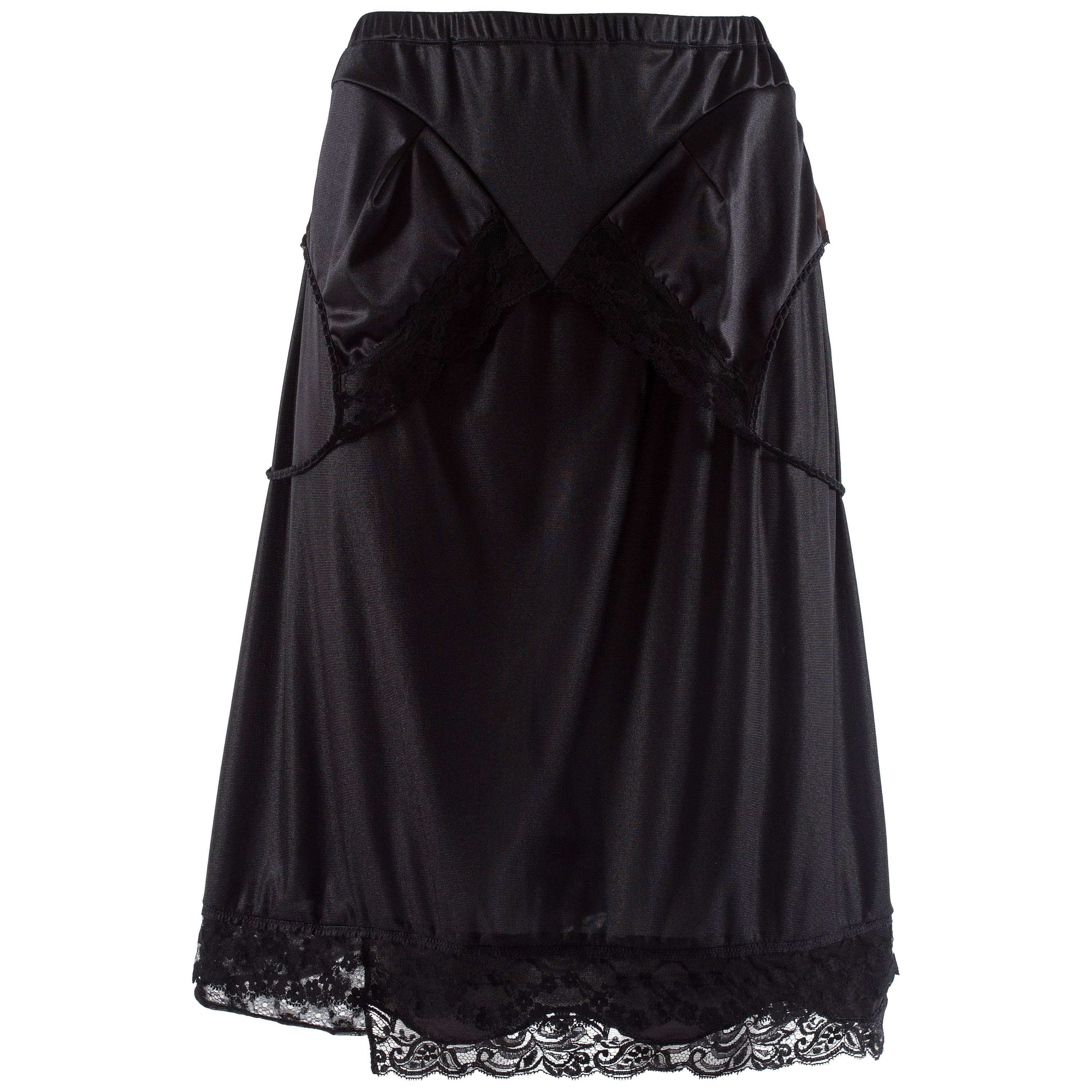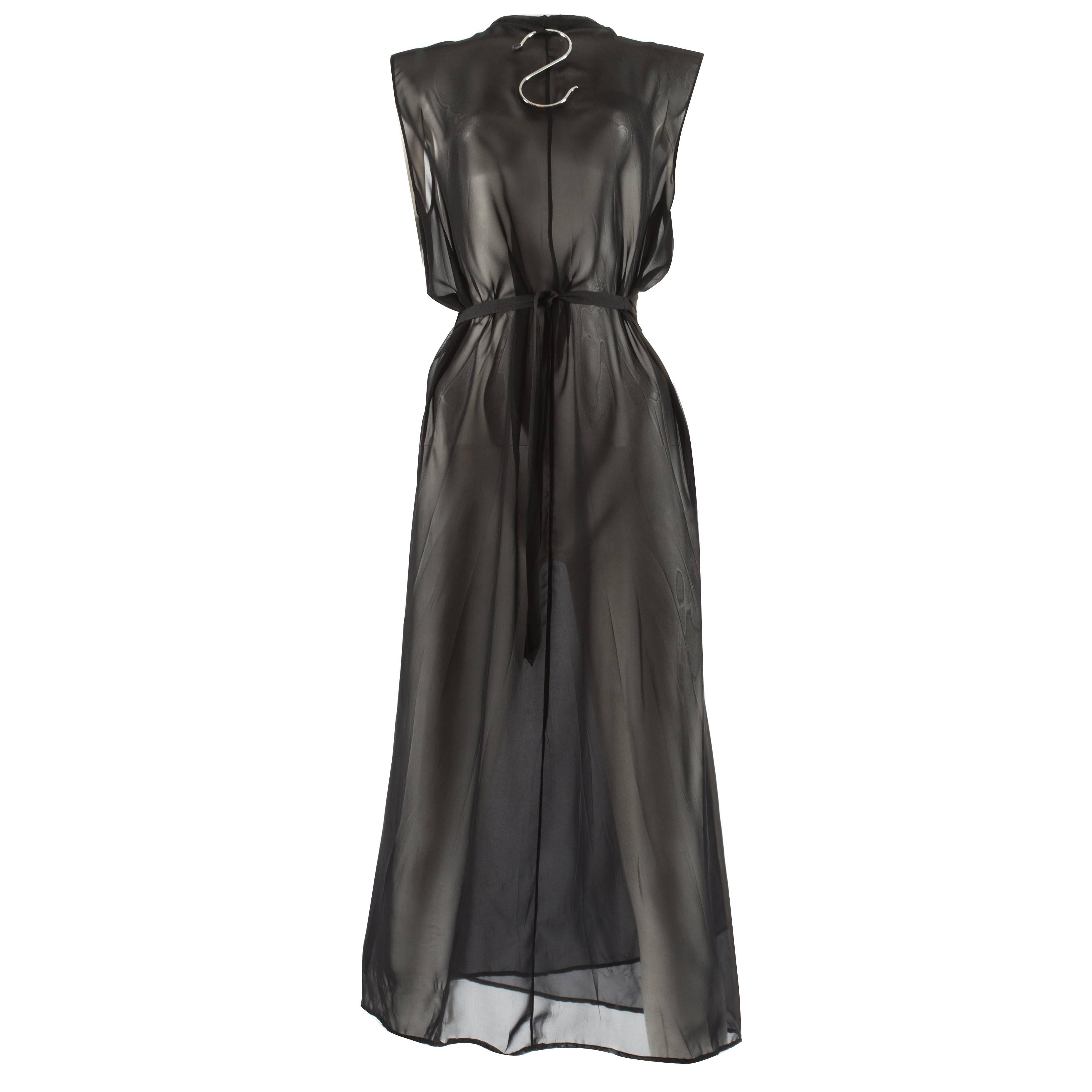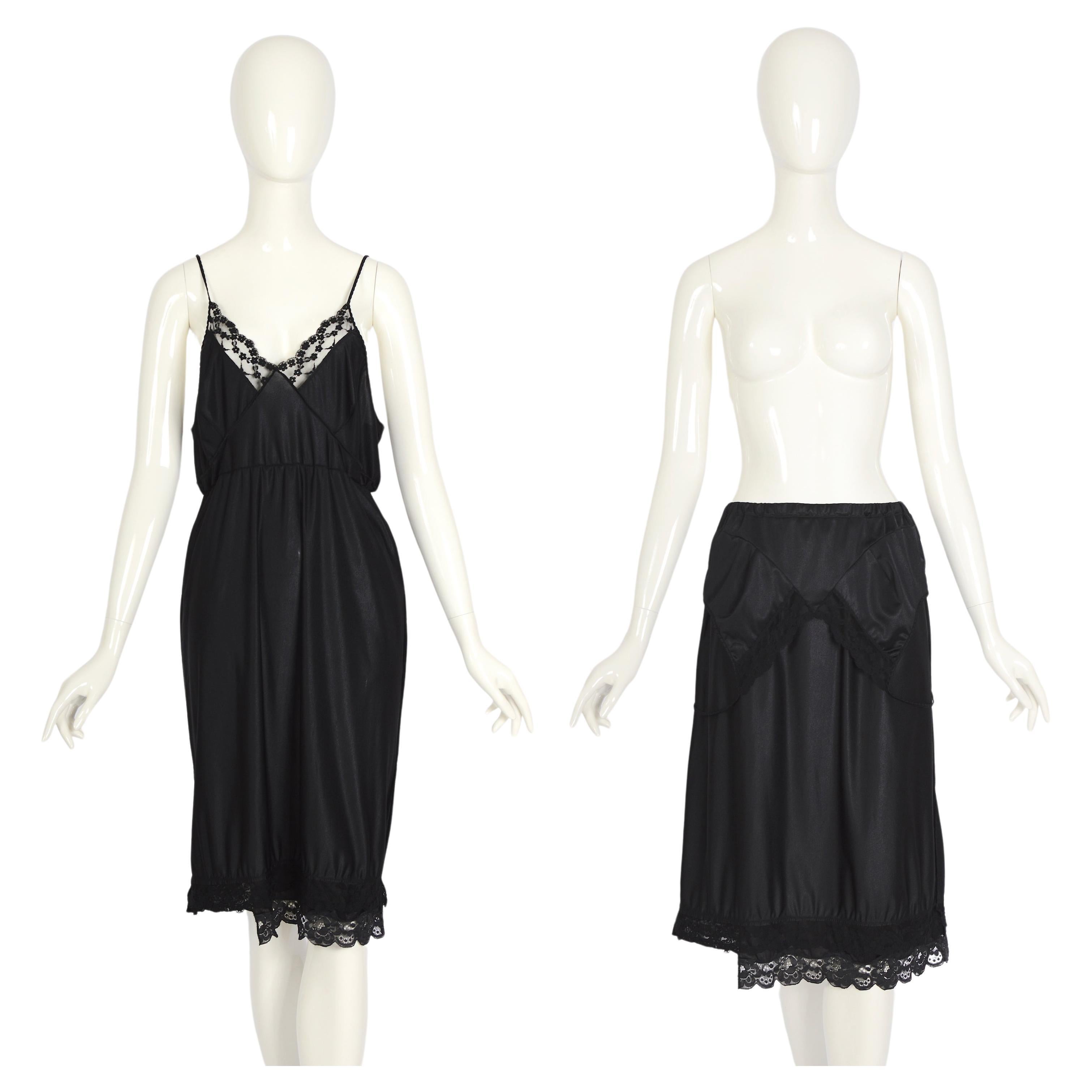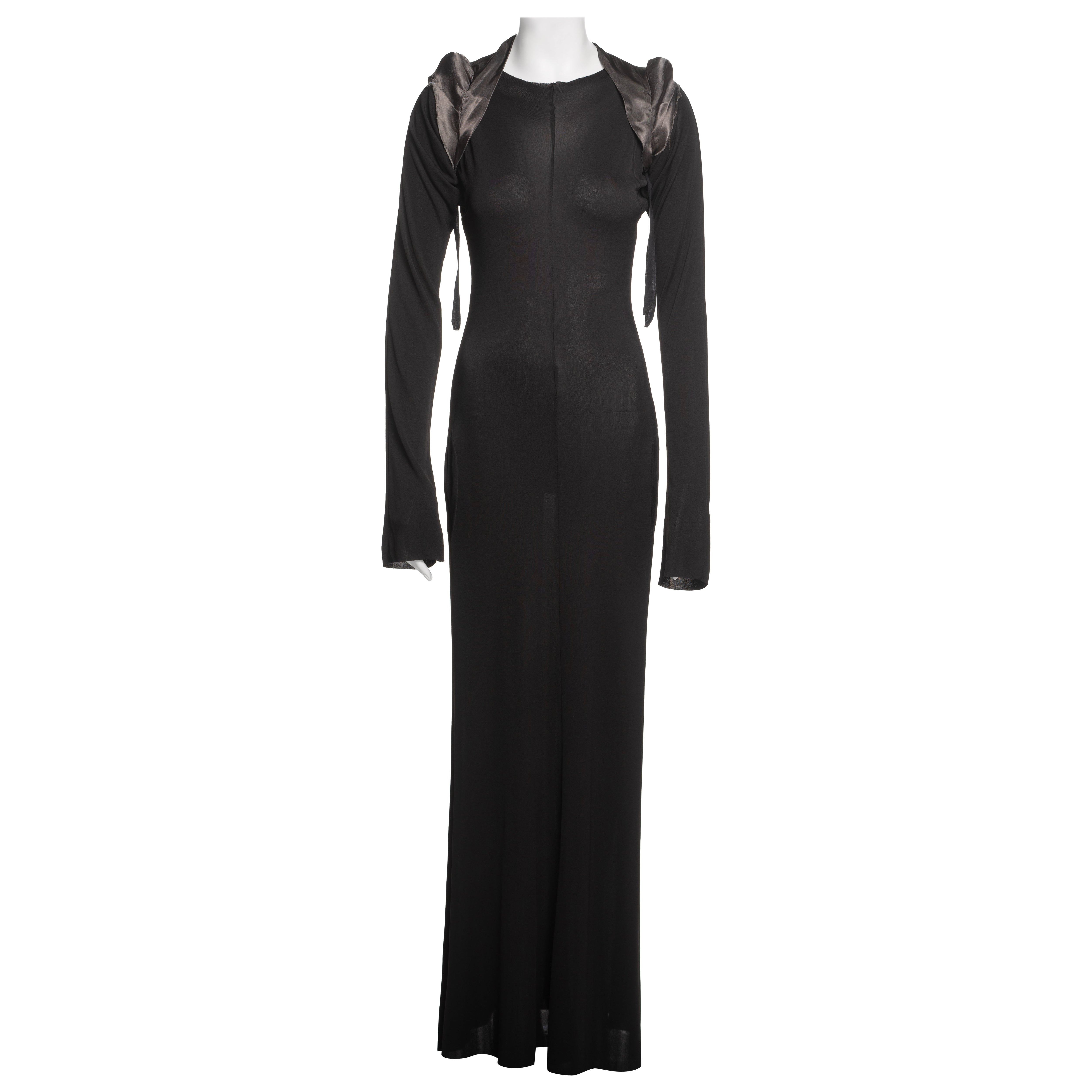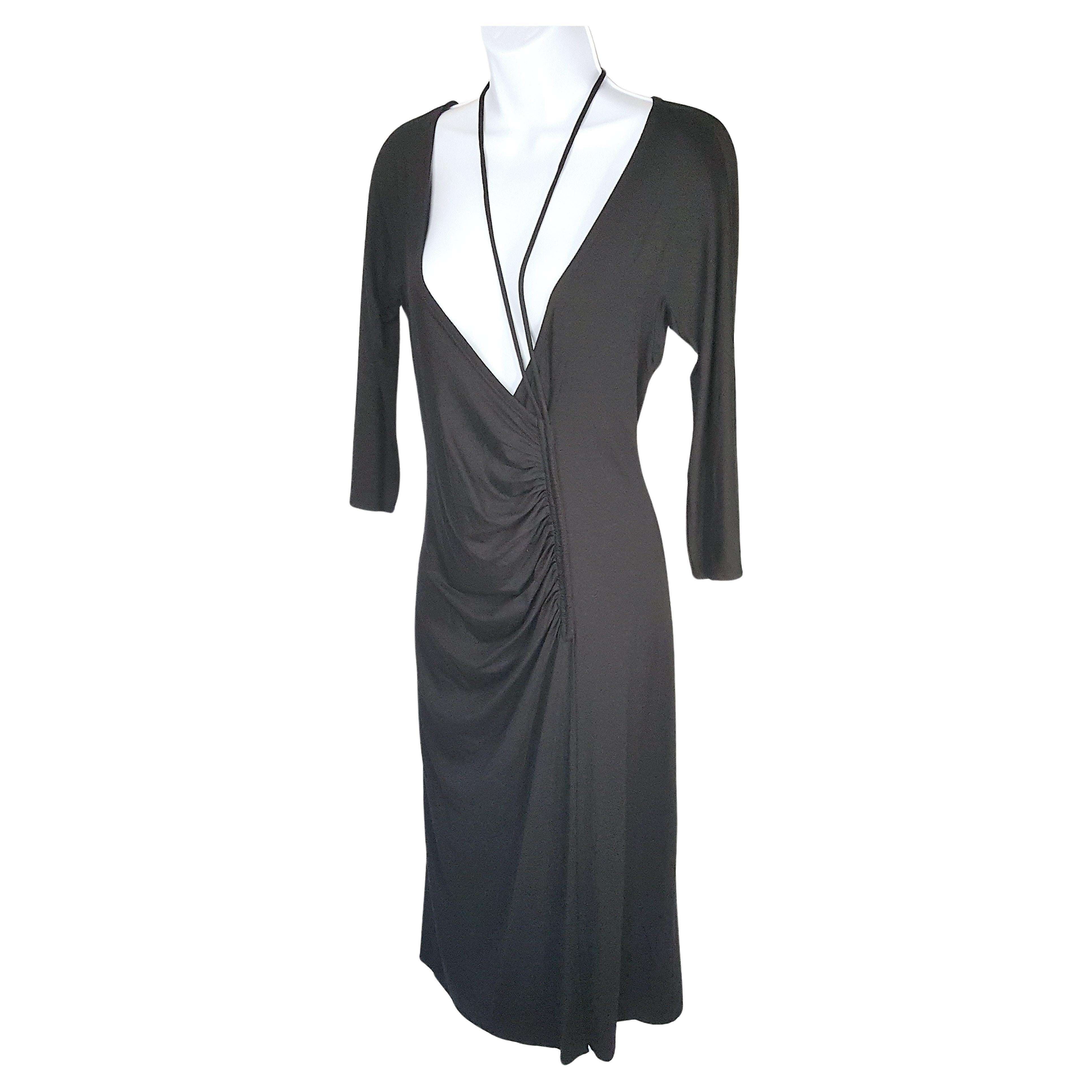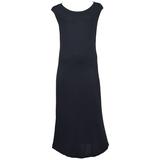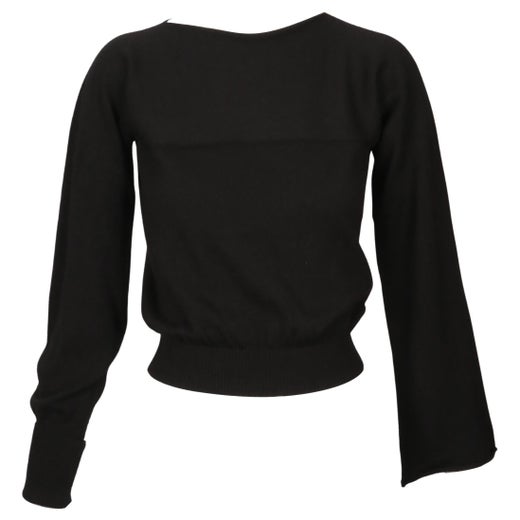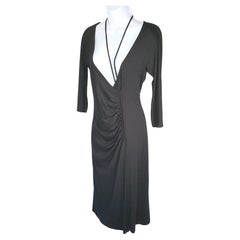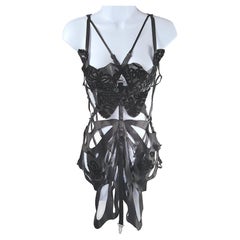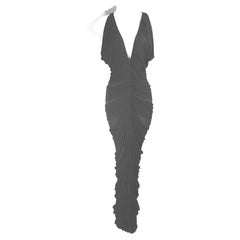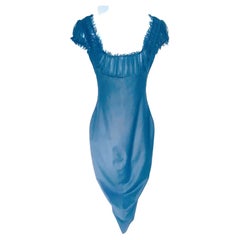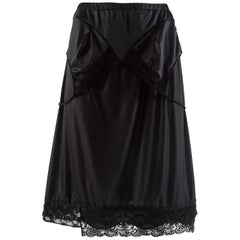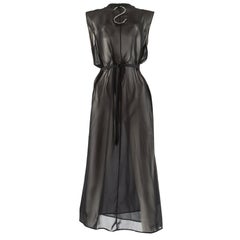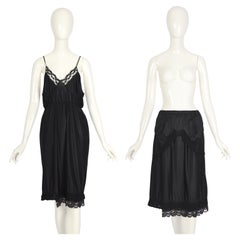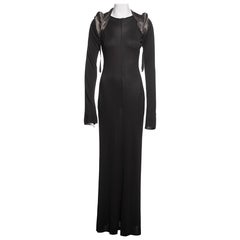MartinMargiela 1990 1stRetrospectiveCollection1994 Sheer Black Convertible Apron
About the Item
- Designer:
- Brand:
- Dimensions:Marked Size: IT40/US 6; one size can fit most (EU)
- Style:1990s (Of the Period)
- Place of Origin:
- Period:
- Material Notes:The designer encouraged buyers since Fall 1990 to add crease or wrinkle patterns to his fabrics that can be impressed with an iron to appear discarded in old age or forgotten since folded in storage.
- Condition:Wear consistent with age and use.
- Seller Location:Chicago, IL
- Reference Number:1stDibs: LU3244222701972
Maison Martin Margiela
Belgian designer Martin Margiela (b. 1957) — whose life, career, and designs for handbags, clothing and shoes have become cult-collector obsessions — pushed those who attended his shows outside their comfort zones. In the years following the 1988 debut of Maison Martin Margiela, he toyed with creative and aesthetic paradoxes that persist in fashion today.
Consider the Spring/Summer 2001 shirt patchworked from vintage clothing labels, or his famous corset dresses made from tailoring dummies, from his Fall/Winter 1997 line. Or his oversize collection for Fall/Winter 2000. In 1992, Margiela told Dépêche Mode magazine, “My clothes appeal to women of a certain mindset rather than of a specific age or physique.”
Born in Genk, Belgium, in 1957, Margiela knew he wanted to be a fashion designer after catching glimpses of Parisian fashion on TV as a child. Although his parents discouraged this career choice as an oddly funny aspiration, Margiela enrolled in the fashion program of the Royal Academy of Fine Arts Antwerp. There, he befriended and graduated a year ahead of the Antwerp Six — the acclaimed group of Belgian fashion designers comprising Dries Van Noten, Walter Van Beirendonck, Ann Demeulemeester, Marina Yee, Dirk Bikkembergs and Dirk Van Saene.
Like many of his contemporaries in the 1980s, Margiela understood Paris fashion but felt a deep resonance with the deconstructed beauty espoused by Japanese designers Yohji Yamamoto and Rei Kawakubo, of Comme des Garçons. Margiela’s fascination with Japan influenced many of his earliest collections and designs, from a dress pieced together from broken plates to his iconic Tabi boots, inspired by the split-toe Japanese worker’s shoe, which dates back to the 15th century.
Margiela decided to launch his own line while working for renowned Paris designer Jean Paul Gaultier. With Belgian designer Jenny Meirens, Margiela established Maison Martin Margiela in the French capital in 1988.
Margiela’s debut show was nothing short of spectacular. Set in a packed Café de la Gare in the still-seedy Marais district, it was also scandalous to the Parisian fashion set of the time. The designer tore up the conventions of contemporary couture presentations, most notably having his models, plucked from the streets and wearing ink-blotted Tabis, wend their way through the crowd.
The show redefined the concept of the runway in a way that would later inspire such designers as Alexander McQueen and Demna Gvasalia.
While the notoriously private designer retired from fashion in 2009, for many Maison Martin Margiela collectors, his pieces capture the irreverence of the postwar, post-punk late 1980s and ’90s. Katy Rodriguez, cofounder of the cult vintage fashion shop Resurrection, is among those who felt a connection to Margiela’s clothing in the subliminal challenges it posed to the time’s beauty norms.
“Growing up in San Francisco and coming out of the end of punk rock, not wanting to be objectified, not wanting to be seen as a sexual object, not wanting your value to be just because you’re pretty — all those clothes played into all of that,” she says. “It really was a reflection of the kind of world the young people I knew at the time wanted to live in.”
John Galliano was named creative director at the house in 2014 and it rebranded as Maison Margiela in 2015.
Find vintage Maison Martin Margiela boots, evening dresses, jackets and more on 1stDibs.
- ShippingRetrieving quote...Shipping from: North Adams, MA
- Return Policy
